Mark Sisson's Blog, page 210
September 6, 2016
Pardon Our Dust! Big Changes Coming Today and Tomorrow!
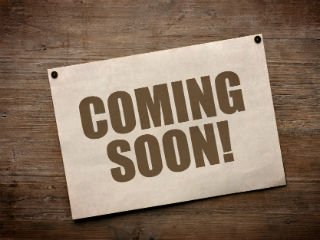 Hi, everyone! Just a quick announcement. If you experience any difficulties with Mark’s Daily Apple today or some issues with the forum through tomorrow, hang in there. We’ll be undergoing a pretty monumental shift. Like I alluded to earlier, we have some very exciting surprises for all of you. And the time has come to let the cat out of the bag, so to speak. But that means we’ll be making a few ruffles getting things situated. What am I talking about? Why the tense, enigmatic, secretive, baiting tone? Well, why not? It’s fun to create a little suspense. And I think this occasion calls for it. Read on to learn more.
Hi, everyone! Just a quick announcement. If you experience any difficulties with Mark’s Daily Apple today or some issues with the forum through tomorrow, hang in there. We’ll be undergoing a pretty monumental shift. Like I alluded to earlier, we have some very exciting surprises for all of you. And the time has come to let the cat out of the bag, so to speak. But that means we’ll be making a few ruffles getting things situated. What am I talking about? Why the tense, enigmatic, secretive, baiting tone? Well, why not? It’s fun to create a little suspense. And I think this occasion calls for it. Read on to learn more.
Many of you have asked for bigger, better, more robust ways of navigating through all of the content I have here on Mark’s Daily Apple. And I’ve heard you loud and clear.
Some of you were hankering for a fresh new look on MDA to go along with all the progress we’ve made over the years. And I shared your desire.
Finally, some of you were looking for some awesome, new, cutting edge content to sink your teeth into.
Message received.
So later today, amidst some possible blips on the radar, you’ll be seeing a very different Mark’s Daily Apple hitting the scene.
New look. New content. But the same dedication to the topics and Primal resources you love.
I can’t wait to show it to you. So just hold onto your hats and bear with us while we start putting on the finishing touches to get this show started.
Stay tuned!




September 5, 2016
Dear Mark: Salt Room Therapy; Can’t Sleep After Training
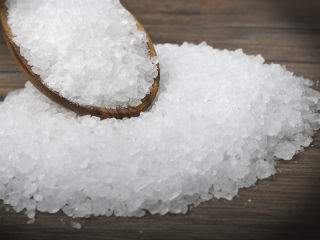 For today’s edition of Dear Mark, I’m answering two questions. First, what’s the deal with salt room therapy? Are there actual benefits, particularly for dermatological and respiratory conditions, to sitting inside a room as aerosolized salt wafts over you? Second, what can a reader do who absolutely can’t get to sleep after training at night?Postworkout insomnia is a real drag, and it will impede your gains, so this is an important topic. Luckily, there are a few things to try.
For today’s edition of Dear Mark, I’m answering two questions. First, what’s the deal with salt room therapy? Are there actual benefits, particularly for dermatological and respiratory conditions, to sitting inside a room as aerosolized salt wafts over you? Second, what can a reader do who absolutely can’t get to sleep after training at night?Postworkout insomnia is a real drag, and it will impede your gains, so this is an important topic. Luckily, there are a few things to try.
Let’s go:
Hi Mark,
Just wondering if you have any information on salt room therapy. These places are popping up all over Australia and I have seen good anecdotal evidence that they are terrific for skin and breathing issues. My granddaughter (1yr) has terrible eczema which I thought might be helped by salt therapy. Do you think there are any possible dangers involved? Either short or long term?
Thanks for your time,
Kerryn
Legend has it that ancient salt miners had such remarkable respiratory health that physicians of the time began prescribing visits to the salt caves for people with asthma and other respiratory conditions. As it turns out, a salt cave’s air is imbued with powdered sodium chloride, or clouds of salt. A salt therapy room recreates this “microclimate of the salt cave” by releasing aerosolized salt into the air. Proponents and a recent literature review say it improves respiratory health, treats asthma, reduces inflammation and swelling of the bronchial mucosa, hastens expectoration of mucus (and all the allergens found within said mucus), and can even treat dermatological conditions like psoriasis and dermatitis.
Most of the modern research into salt room therapy, also called halotherapy (from “halo,” Greek for salt), comes from Eastern Europe. It’s quite interesting but difficult to parse.
A PubMed search for “halotherapy psoriasis” produced a confusing Russian study that appears to show benefits for psoriasis patients. A 1993 paper found that among 112 children with atopic dermatitis treated with halotherapy, 58% reported a full recovery and 20% a partial recovery at 24 months. Another, earlier Russian paper reports the successful treatment of 216 pediatric bronchial asthma patients using halotherapy. A halotherapy institute in Belarus reports treating over 42,000 respiratory and allergic patients with a 97% success rate.
In 2013, 45 patients with tonsillar hypertrophy (the kind of hypertrophy you don’t want) received either halotherapy or placebo (spending time in a room that resembled the salt therapy room only without the aerosolized salt). 44% of the halotherapy group improved, while only 22% of the placebo group did. Moreover, the young patients enjoyed the halotherapy, considering it a “time for play rather than therapy.”
Most of the studies don’t seem to have control groups, and the language barrier (albeit via translations) makes it tough to analyze, but I’d say it’s worth a shot if it’s not too expensive and nothing else has worked.
Good luck and let me know how it goes.
Hi Mark,
I love working out – especially HIIT. I tend to work out between 7pm and 9:30pm after I leave the office. I have noticed that during weeks where my training is especially intense, I suffer from incredible insomnia. I do not want to stop training, but on the other hand, need to bring down my exercise-induced cortisol levels so I can catch some zzzs. Any suggestions on how I can do this naturally and safely?
Janna
Be the weirdo wearing blue-blocking goggles
The worst thing you can do for your sleep is to spend your evening under fluorescent lights with blaring music and two dozen big screen TVs beaming blue light directly into your eyes. Couple the heavy light-induced melatonin suppression with the stress hormones coursing through your veins from the constant training sans-respite and yeah, you won’t sleep well. Pick up a cheap pair of orange safety goggles and wear them to the gym for two weeks. See if it helps. I bet it will.
Train in the morning
Instead of losing 2.5 (and likely 3, with showers and such) hours every night to your workout, shift it to the morning. You can focus on establishing a nice, relaxing evening routine. You can read some fiction, chill out with friends or partners, have some tea, maybe some gelatin. Sure, you’ll have to wake up earlier, but you’ll be sleeping better, going to bed earlier, getting the workout over first thing, and that should free up enough sleep time for an earlier wakeup.
Gelatin before bed
Gelatin is a great source of glycine (the best, actually). Human studies show that 3 grams of glycine taken before bed increases the quality of your sleep and reduces daytime sleepiness following sleep restriction.
L-theanine before bed
While L-theanine hasn’t been definitively shown to reduce cortisol, it does induce relaxation and improve sleep quality (especially in hyperactive people). Go for 100-200 mg. You might also try Primal Calm, my anti-stress stack that includes L-theanine.
Look into anti-stress teas, herbs, and supplements
Browse these two posts for ideas.
Don’t make it worse with caffeine
Keep caffeine to the morning hours. Avoid pre-workouts that include caffeine if you intend on training at night.
Don’t train HIIT so much
HIIT, sprints, and related workouts work as an acute stressor: a massive dose of intensity that you need lots of time to recover from. If you try to make them a chronic stressor, something done every day or every other day, you’ll get diminishing returns and blowback from your adrenals. Your insomnia is blowback.
But at some point, you’ll have to just chill out and reassess your schedule. It sounds rather extreme to me.
Why are you training for two and a half hours at a time? Are you doing this every day? Why?
I’ve observed a funny thing: when something isn’t working, many people do the same thing even harder. Low-carb not working? Go even lower. Dropping 500 calories a day not helping your weight? Drop 1000! This can be a big mistake. That you feel the need to train so frequently and for so long suggests that you’re not getting the results you’d expect. Just remember that you don’t get fitter during a training session. You get fitter during your recovery from the training. If you’re doing HIIT every day, you aren’t recovering. You aren’t improving. And the lack of sleep will only hamper your recovery and adaptation even further.
That’s it for today, folks. If anyone has any tips for post-workout insomnia or experience with salt room therapy, let us know down below!
Like This Blog Post? Subscribe to the Mark's Daily Apple Newsletter and Get 10 eBooks and More Delivered to Your Inbox for FREE



September 4, 2016
Weekend Link Love – Edition 416
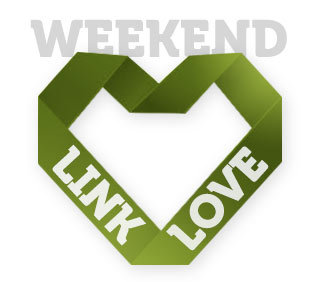
Want to run your own Primal Kitchen Restaurant? Submit your info here. If you’re a match, you’ll get access to an exclusive informational webinar on September 8th.
Research of the Week
Hypertrophy in older men depends on the number of capillaries serving their muscles.
Probiotics are probably helpful for type 2 diabetics.
Vaping acutely increases aortic stiffness.
Your dog does understand you (fMRI warning.)
Manipulating the sequence of your food intake (eating protein and fat before carbs) improves glucose control.
If we think our meat was raised humanely, it tastes better.
New Primal Blueprint Podcasts

Episode 133: Dr. Eileen Laird: Dr. Eileen Laird is an expert on autoimmune disease who’s using the paleo diet to cure her own rheumatoid arthritis. She hangs out with Elle Russ to chat about some simple tweaks you can make to your diet, lifestyle, daily routine, and mindset to improve your immune health.
Each week, select Mark’s Daily Apple blog posts are prepared as Primal Blueprint Podcasts. Need to catch up on reading, but don’t have the time? Prefer to listen to articles while on the go? Check out the new blog post podcasts below, and subscribe to the Primal Blueprint Podcast here so you never miss an episode.
How Caring Less Can Help You Accomplish More
Why Training Your Tendons is Important (and 11 Ways to Do It)
Interesting Blog Posts
An easy weight-loss hack: double your veggies and halve your starch.
Neither industrial grain-based nor industrial animal-based agriculture are sustainable.
Worried? Can’t stop your racing mind? Go for a hike.
How much alcohol should you have?
Media, Schmedia
Obesity rates are actually improving in some states.
I chatted with Outside Online about fasting.
Maybe you can’t just smile your way to happiness.
As rates of opioid overdose skyrocket, the DEA decides to ban the legal alternative with the most potential to curb opioid addiction and abuse.
The Zika virus story gets scarier.
I’m all for eating more collagen, but not like this.
Everything Else
Orange juice and soda sales are down.
VR spiders to treat arachnophobia.
What playgrounds looked like a hundred years ago.
Lucy (our distant hominid ancestor) may have died after falling from a tree.
Evolution is ableist.
A new device promises to detect gluten.
Many fruits and vegetables have more protein than you think.
What’d those reindeer ever do to Thor?
Nice tumbling, Gene. So long.
Recipe Corner
Caprese salad is timeless.
Kale artichoke pistou (think pesto).
Time Capsule
One year ago (Sep 4 – Sep 10)
Why Camping is So Great: The Benefits of Spending Time in the Great Outdoors – Summer’s pretty much gone, so hurry up.
Can Techies Improve Food? – Silicon Valley aims to disrupt the food system. How’s that going?
Comment & Pic of the Week

– Boner broth.




September 3, 2016
PRIMAL KITCHEN™ Honey Mustard Vinaigrette Short Ribs & Radicchio Salad
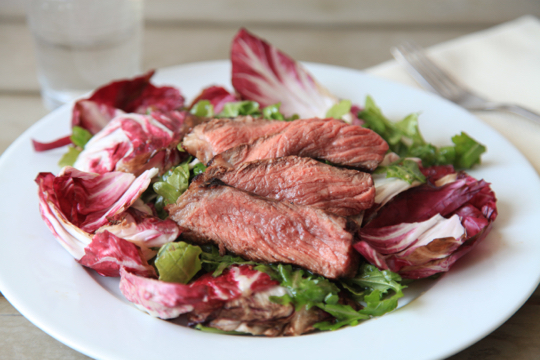 Short ribs are often braised for hours, but when the weather outside is hot and you don’t want to turn on the oven, there’s a better way. Marinate those ribs, and throw ‘em on the grill.
Short ribs are often braised for hours, but when the weather outside is hot and you don’t want to turn on the oven, there’s a better way. Marinate those ribs, and throw ‘em on the grill.
PRIMAL KITCHEN™ Honey Mustard Vinaigrette serves double-duty here as a marinade for meat and a dressing for salads. The vinaigrette does all the work while you sit back and relax. There’s no chopping or stirring needed to put this 4-ingredient meal together, and your kitchen will stay so clean, it won’t even look like you’ve made dinner.
As a marinade, the vinaigrette’s tangy mustard flavor pairs perfectly with beef and the honey caramelizes the edges of the ribs as they cook. As a salad dressing, the vinaigrette adds a hint of sweetness to balance the bitter and spicy flavors in the radicchio and arugula salad. Piled together on a plate, the grilled honey mustard short ribs and the radicchio salad are a bold and flavorful combination. It’s a meal you’ll want to eat all summer.
Servings: 4
Time in the Kitchen: 30 minutes plus 2 hours to marinate
Ingredients:
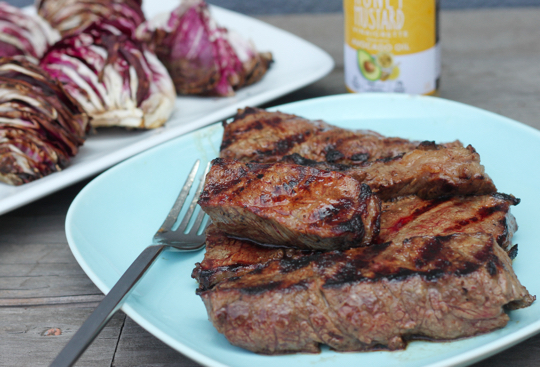
1 1/2 pounds boneless short ribs, 1 1/2 -inch thick (680 g/38 mm)
1/2 cup plus 1/4 cup PRIMAL KITCHEN™ Honey Mustard Vinaigrette, divided (120 ml + 60 ml)
1 head radicchio, cut into fourths, leaving the leaves attached at the bottom core
4 large handfuls arugula
Instructions:
In a large sealable plastic bag, combine the short ribs with 1/2 cup/120 ml PRIMAL KITCHEN™ Honey Mustard Vinaigrette. Toss and turn the bag to make sure all the meat is coated in vinaigrette. Marinate 2 hours in the refrigerator.
Remove the ribs from the marinade, and season lightly with salt.
Prepare a grill for medium-high heat; lightly oil grate.
Grill short ribs, turning as needed until lightly charred on all sides, 8 – 12 minutes total.
Let the ribs rest 10 minutes, then slice against the grain.
While the ribs are resting, brush the radicchio wedges lightly with olive oil. Grill the radicchio wedges 1 to 2 minutes on each side until charred. Remove from the grill, trim off the bottom core, and thinly slice the leaves.

In a large bowl, toss the radicchio and arugula with 1/4 cup/60 ml PRIMAL KITCHEN™ Honey Mustard Vinaigrette.
Serve the sliced short ribs over the radicchio and arugula salad.
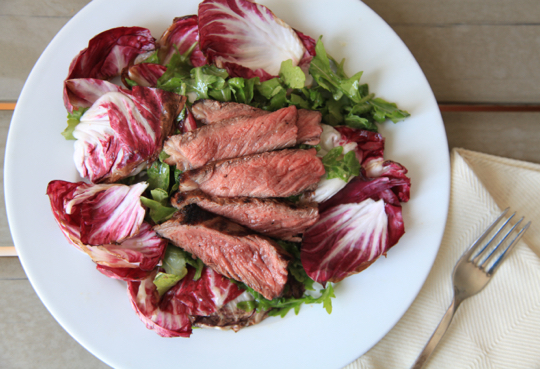
Not Sure What to Eat? Get the Primal Blueprint Meal Plan for Shopping Lists and Recipes Delivered Directly to Your Inbox Each Week. Now Available as an App!
Save



September 2, 2016
Paleo Thyroid Solution Success Story: Sher Smith
It’s Friday, everyone! And that means another Primal Blueprint Real Life Story from a Mark’s Daily Apple reader. This week’s featured testimonial is one of many success stories spurred by Primal Blueprint Publishing’s upcoming release, The Paleo Thyroid Solution, by Elle Russ.
If you have your own success story and would like to share it with me and the Mark’s Daily Apple community please contact me here. I’ll continue to publish these each Friday as long as they keep coming in. Thank you for reading!
 I developed an eating disorder when I was twelve. Fifteen years later, the anorexic, bulimic, binging behaviors had taken a serious toll on my body and my health. I gained and lost hundreds of pounds during this time and my yo-yo dieting, rapid weight gains and losses, and horribly misguided nutrition left me feeling like, well…absolute sh*t.
I developed an eating disorder when I was twelve. Fifteen years later, the anorexic, bulimic, binging behaviors had taken a serious toll on my body and my health. I gained and lost hundreds of pounds during this time and my yo-yo dieting, rapid weight gains and losses, and horribly misguided nutrition left me feeling like, well…absolute sh*t.
I started a stressful corporate job after college and things went downhill from there. Late nights, tons of caffeine, and chronic cardio (in an effort to “finally get my butt in gear”) only did further damage to my body. For the hundredth time, I tried eating less and exercising more in an effort to lose weight. For the hundredth time, it did not work. I could not sustain the calorie restriction and exercise it took to lose and keep off weight. I would burn out, and as soon as I went back to normal calorie consumption the weight would pile back on. The more I repeated this cycle, the less it worked. Losing weight was an epic battle, and it would come back on seemingly overnight.
 When my boyfriend (now fiancé!) introduced me to the ancestral health field (hat tips to Mark Sisson, Robb Wolf, and Angelo Coppola), the approach to nutrition seemed crazy enough to actually work, so I gave it all a try. I changed the way I thought about, bought, prepared, and ate food. Food quality increased, I cut out gluten and processed foods, and I cut back on alcohol and sugar. I eliminated all but high-quality, high-fat dairy. With these changes alone, I dropped about 15 lbs.
When my boyfriend (now fiancé!) introduced me to the ancestral health field (hat tips to Mark Sisson, Robb Wolf, and Angelo Coppola), the approach to nutrition seemed crazy enough to actually work, so I gave it all a try. I changed the way I thought about, bought, prepared, and ate food. Food quality increased, I cut out gluten and processed foods, and I cut back on alcohol and sugar. I eliminated all but high-quality, high-fat dairy. With these changes alone, I dropped about 15 lbs.
Aside from the weight loss, which plateaued, everything else kept going downhill. As part of my corporate job, I took international assignments in both Montreal and Costa Rica. Living abroad added more stress to my life, and my inability to handle the anxiety and depression I felt meant I was overwhelmed all of the time. I had no energy. Sleeping ten or more hours a night left me feeling exhausted and drained. I had to set multiple alarms just to get myself up in the morning, and my caffeine intake gradually increased to boost my alertness. Getting through the week became harder and harder as my energy levels went lower and lower. My hair was so dry and brittle that it would break off in my hand when I ran my fingers through it, and it had all but stopped growing. My fingernails were thin and flimsy and ripped constantly, and my skin would be cold to the touch, even under layers of clothing.
 I had absolutely no endurance. Intense exercise left me with numb lips and heavy legs, and I couldn’t explain why. I would drudge up the energy for a workout, but after about thirty seconds of high intensity I would have to stop. I tried to push myself through this point several times, but it resulted in seeing stars and getting dizzy. It was as if someone had completely drained my energy tank. I was thirsty all the time. My pee was clear, but drinking water didn’t make me feel hydrated. Digestively, things weren’t going so well either. I pooped once a week, maybe. At the age of twenty-five, I had hemorrhoids that showed up pretty regularly due to constipation (but this was normal for me, and at the time I didn’t even recognize this as an issue).
I had absolutely no endurance. Intense exercise left me with numb lips and heavy legs, and I couldn’t explain why. I would drudge up the energy for a workout, but after about thirty seconds of high intensity I would have to stop. I tried to push myself through this point several times, but it resulted in seeing stars and getting dizzy. It was as if someone had completely drained my energy tank. I was thirsty all the time. My pee was clear, but drinking water didn’t make me feel hydrated. Digestively, things weren’t going so well either. I pooped once a week, maybe. At the age of twenty-five, I had hemorrhoids that showed up pretty regularly due to constipation (but this was normal for me, and at the time I didn’t even recognize this as an issue).
In 2012 my hair was breaking off daily and was the texture of straw.
The most acute and worrying symptoms for me were mental and cognitive. Mentally, my memory was so poor that if I didn’t write down a phone number, appointment time, name, or task immediately, I would forget it. I asked myself daily, “What is wrong with me? Am I stupid?” My job consisted of numbers and spreadsheets, but I couldn’t read them in the right order and constantly mixed up digits. Emotionally, I was anxious and depressed. I felt overwhelmed by the simplest things, and my heart rate would skyrocket with stress. It took less and less to get me worked up, and I often ended up in tears. I started getting hives as a result of the anxiety.
I went to my doctor, looking for answers, and he ran a few tests. He concluded that all was well and left me with a quick message: “You’re fine. You just need to eat less and exercise more to lose the weight. Try a low-fat diet…and work on managing your stress. If you want, we can try antidepressants.” It was a message I had heard before, but it didn’t feel like the right answer to me anymore. I was armed with enough ancestral health knowledge at this point to know that something wasn’t right.
I found a naturopathic doctor who was willing to work with me. After hearing my symptoms he said it was most likely that I was hypothyroid. We did a comprehensive blood work panel and an adrenal salivary test.
Below are the first results of my thyroid test.

My adrenal panel came back with pretty advanced adrenal fatigue, and a picture started to come together. After reviewing everything, the “official” diagnosis was adrenal fatigue and malnutrition from a lifelong eating disorder. What about a thyroid issue?
“No,” he said, “your thyroid tests do indicate suboptimal thyroid status in my opinion, but nothing that I would deem to be abnormal.” (Direct quote from an email exchange we shared.) We started a supplement regimen, and I saw some improvement to my energy levels as my adrenal glands received back-up from the adaptogens, adrenal complex, vitamins C and B12, magnesium, multivitamin, and Celtic sea salt I was taking. I quit caffeine, and things improved a bit more. My weight stayed put, and this doctor also told me that my issue was willpower related, that I should focus on eating less and exercising more (though to his credit, he did not recommend chronic cardio). I was getting pretty sick of that being the only answer, and I constantly questioned why I struggled so much against my body.
In September 2014, I met Elle at Mark Sisson’s PrimalCon event, and my life was forever changed.
I overheard Elle talking to someone about her own thyroid story, and my interest was piqued. I had heard of hypothyroidism and had started doing some research about it after my own thyroid was tested, but I knew almost nothing. I approached her and explained where I was and how I felt. We spent the next couple of hours talking about thyroid and adrenal health, and why the conventional medical system so often fails hypothyroid patients. Elle told me exactly what blood tests to get, and she helped me find an NDT (natural desiccated thyroid)-friendly doctor in Chicago. We also talked about things I could do in the meantime to start supporting my adrenals and body. She truly empathized with me, and she was adamant that my situation was not hopeless and that she would help in whatever way she could to get healthy again. She was so encouraging and positive about my future, even when I could not see the silver lining.
I left California with hope, for the first time in a long time, that I could feel better.
Back in Chicago, I saw an NDT-friendly doctor and he retested everything. I took a twenty-four-hour cortisol test, and it was clear I had major cortisol/adrenal issues. The doctor wanted to treat my adrenals first to see if my thyroid function would resolve. Five months after starting adrenal supplementation, my thyroid picture didn’t change much.
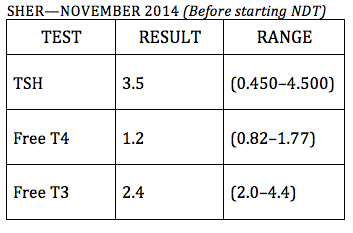
My doctor agreed to start me on NDT to see how raising my levels would improve my symptoms and adrenal function. We started with 1/2 grain of NDT in November, and I gradually raised my dosage over the next several months. By May I was on 3 grains, and I was starting to see and feel massive changes in my body and my mind.
My hair started growing, and it became shiny and strong again. My nails stopped cracking. I started pooping every day (and man, that makes such a difference, especially without hemorrhoids). My memory improved. My ability to problem-solve came back. My family and friends noticed an improvement in my mood and behavior. I felt as if I could handle being social without feeling so overwhelmed (something I had attributed to becoming increasingly shy with age). I felt witty again. I started sleeping soundly for eight hours and bouncing out of bed in the morning. I started seeing an improvement in things I didn’t even realize were issues. My eyelids weren’t puffy in the morning anymore. My thirst level went down. My sex drive increased! And my PMS symptoms (cramping, bloating, flow, mood swings) and anxiety all decreased. While I still occasionally get hives, it is a rare occurrence these days. Weight-wise, I’ve lost about 10 additional pounds since May 2016. The weight has come off very gradually (and all from around my midsection), and I have changed nothing about my diet, which is a whole foods–based, gluten-free, lowish carbohydrate diet. Now that my energy is up and my endurance is back, I am able to be back in the gym, lifting weights and sprinting.
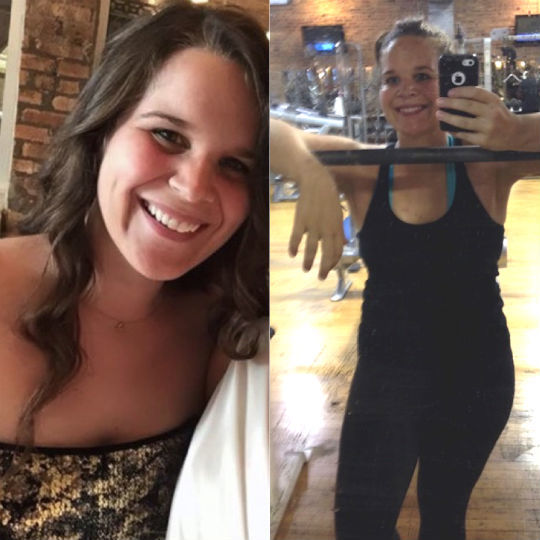
 In addition to all the work that I’ve done to get myself physically back to health, I’ve also done a tremendous amount of inner work to heal the emotional eating and emotional attachment behaviors I had related to food. I even became certified as an Eating Psychology Coach to lead myself through the waters of emotional eating, and now I coach others through these waters as well. In the last two years, I have changed jobs and careers, moved, and let go of people or things in my life that caused more stress than they were worth. I decided to place my health as the first priority in my life. Now, for the first time ever, I feel like all the pieces of my health are moving in the right direction together. Progress has been slow, and I’ve also had to exercise patience throughout, but I am determined to keep moving forward. Elle was the missing piece for me in my confusing puzzle of mental, emotional, and physical health.
In addition to all the work that I’ve done to get myself physically back to health, I’ve also done a tremendous amount of inner work to heal the emotional eating and emotional attachment behaviors I had related to food. I even became certified as an Eating Psychology Coach to lead myself through the waters of emotional eating, and now I coach others through these waters as well. In the last two years, I have changed jobs and careers, moved, and let go of people or things in my life that caused more stress than they were worth. I decided to place my health as the first priority in my life. Now, for the first time ever, I feel like all the pieces of my health are moving in the right direction together. Progress has been slow, and I’ve also had to exercise patience throughout, but I am determined to keep moving forward. Elle was the missing piece for me in my confusing puzzle of mental, emotional, and physical health.
I feel like a new person! Elle helped me understand certain tweaks in dosing and offered ideas about how and when to take my NDT to further optimize my situation. Elle has been an amazing resource along the way, supporting me on this path to better health. Without Elle believing in my story when my doctors would not, my life would be much different than it is today. I am now pregnant with my first child, weeks away from delivery, and I have gained only 17 lbs—everyone is amazed at how good I look and feel. I have lots of energy, minimal hormonal or mood swings, and stable weight. I am still exercising every day and even heavy lifting! My current NDT dose is four grains (two grains in the morning and two grains in the afternoon), which is up from three grains since the start of my pregnancy. I am so happy that I feel this great! Thank you Elle!
Sher




September 1, 2016
The Dangers of People Pleasing in the Modern World (and What to Do about It)
 “Be Selfish.” It’s without a doubt the habit of Highly Successful Hunter-Gatherers I’ve gotten the most feedback on throughout the last few years. (You can check out the other nine if you’re curious or want a refresher.) The reason, I think, is that it’s so unexpectedly radical, so brashly subversive to an almost universally held tenet: good people serve others rather than themselves. You can file it under the “better to give than receive” ethic and the general cult of self-sacrifice that permeates Western moral and work culture. We’re supposed to want to help others, to devote our lives to the service of the greater good. To be selfish is to be shallow, vapid—a flimsy, one-dimensional model of what it means to be human. But as modestly proposed in The Primal Connection, we’re working here with an unfortunate distortion that can quickly wade into treacherous, life-sucking waters.
“Be Selfish.” It’s without a doubt the habit of Highly Successful Hunter-Gatherers I’ve gotten the most feedback on throughout the last few years. (You can check out the other nine if you’re curious or want a refresher.) The reason, I think, is that it’s so unexpectedly radical, so brashly subversive to an almost universally held tenet: good people serve others rather than themselves. You can file it under the “better to give than receive” ethic and the general cult of self-sacrifice that permeates Western moral and work culture. We’re supposed to want to help others, to devote our lives to the service of the greater good. To be selfish is to be shallow, vapid—a flimsy, one-dimensional model of what it means to be human. But as modestly proposed in The Primal Connection, we’re working here with an unfortunate distortion that can quickly wade into treacherous, life-sucking waters.
To adapt an old proverb, I’d say the road to personal hell is often paved with the well-intentioned pursuit of people pleasing. While there’s certainly nothing wrong with wanting to see others happy or making a positive difference in the world, we more quickly meet with a law of diminishing returns than we may admit. Where does natural, feel-good altruism morph into unhealthy self-sacrifice? At what point are we denying our basic needs for the comfort and good opinions of others? And what gets lost when we find ourselves down that dysfunctional rabbit hole?
I think a glimpse at our fore bearers’ reality offers an interesting perspective to all this. Grok and his kin, after all, lived in small bands of 25-40 people (depending on which anthropological analysis you read). Certainly, “pro-social” behavior was adaptive for oneself (better to get along than be exiled into the Paleolithic wilderness) and for one’s group (a united, functioning group operates more effectively and, thus, has a better chance of surviving). Within these small groups, demands were rigorous but relatively few in number and direction. Leisure was ample as were opportunities for solitude if one so desired. There was work to be done, and it was achieved cooperatively. Band ethos obliged all to contribute to their potential.
Today, by comparison, we have at least peripheral contact with sometimes hundreds of people on a daily basis.
We’re part of larger social groups, neighborhoods, families, social media cliques and work groups that, unlike the Paleolithic model, rarely overlap. We may not spend all day with these people hunting and dressing a kill, but we field countless micro-demands (e.g. favors, questions, invitations, feedback, etc.) from them in addition to more substantial requests and responsibilities. With email, text and social media, the fact is, hundreds if not thousands of people have unlimited access to us every day—a novel phenomenon to the human nervous system.
To boot, our much more diffuse societal structure means there aren’t only more demands from more directions, but there are fewer checks and balances on the rigor or frequency of those demands. It’s certainly easier to depersonalize others in a culture where social contact is compartmentalized. Without everyone living in close quarters and in constant contact together, there are fewer witnesses to the composite of any given person’s behavior—a situation capitalized on by office bullies, social manipulators and energy vampires everywhere. Band community in Grok’s time would’ve weeded out these folks and sent them packing, but today we rarely enjoy that kind of awareness, let alone intervention.
Some of us may have an easier time taking it in stride, but others are more prone to what’s sometimes pathologized as “people pleasing” behavior.
Simply put, people pleasing is the subservient tendency to put others first and to acquiesce to social and/or professional demands even to the detriment of oneself. Truth be told, however, most if not all of us likely feel pressure to accommodate more things for more people these days.
Just how much should we be expected to take in, and how much external responsibility can we accommodate before we start to suffer as a result? Are we willing to subject ourselves to continual stress, anxiety and burnout to stay in everyone’s good graces, or are we ready to get off the carousel for the sake of personal balance and mental well-being? How do we begin to reorient ourselves from a people pleasing or over-accommodating existence toward a more measured one?
Drop what you aren’t responsible for
The years have taught me that we often carry burdens we never needed to pick up. Let’s be clear on one thing, for instance. We all choose to participate in activities, chores or projects either because something is a condition of our employment or we decide we’d like to help someone with a specific task. We participate in the task. We take responsibility for our actions related to the task that we’ve accepted. We are not, however, in accepting a task or in not accepting a task, responsible for anyone’s feelings or expectations at any point in the process or discussion.
Simple rule: hand it back.
Accept that not everyone will like you
Especially after implementing the point above. In band society, it paid to get along with the couple dozen people around you. In today’s society, that’s an unrealistic scenario that will exact too high a price from your own happiness, health and contentment. If you need it, Grok gives you his personal permission to be choosy.
Embrace a new definition of selfish
If we’ve spent our entire lives defining ourselves by how much we give to others, we need to realign those expectations. To be selfish in the Primal sense isn’t to be a jerk who never thinks of others or never acts to better the world around us. It’s simply to think and act realistically for the sake of self-preservation.
We’re of no use to anyone if we ourselves are floundering. When we put our own oxygen mask on first, we’re better able to serve others in our lives. We do this with unapologetic self-care and necessary boundaries around our time and energy. This includes checking out (from the virtual world, too) when we want to rather than when others would prefer it.
Get real about how people pleasing plays out in your life
Assess your life and the situations in which you’ve done things you had no interest in doing, things that didn’t serve you and even ended up being to your detriment (e.g., resulted in exhaustion or missing other opportunities). Who do you accommodate too much? What do you accommodate too much of? Where and when do you typically do this or agree to do it? And why do you keep putting yourself in the same miserable straits?
Determine where you need new and improved boundaries in your life
Decide how much time and effort you’re willing to commit for helping others. Once you’ve settled on one, don’t be afraid to cut that number in half. Be thoughtful about what time you want to reserve for yourself and when you’d be happy being available to other people.
Ration and schedule time for email/text/phone call responses
This is putting boundaries around your time and energy in the virtual world, and it’s one of the most neglected steps people take to protect their sanity. Few things in life require an immediate response. Stop living like everything is a Grok-style emergency even if other people around you are. You’ll be more content and productive as a result.
Have a line for saying no
The desire to say no is great, but let’s face it. If you aren’t prepared in the moment, you may lose your nerve out of a sense of discombobulation. Have a scripted response when you want to decline a request or invitation. “Thanks, but I have a commitment” or “I appreciate your asking, but I’m booked up that week” can be simple and to the point. If you can’t bring yourself to that kind of response or don’t think that will suffice for the situation, say you’ll think about it and let them know by a certain time.
Stop explaining yourself
This is the essential follow-up to the previous point. When you say no to a request (barring a necessary project or duty related to your employment), you aren’t obligated to explain the whys or why nots. If someone presses the point, understand that this person is the one breaking the social contract (not you), and simply repeat the same line that you have another commitment and won’t be able to attend/participate/help out/join/etc. If they won’t let it go, imagine what Grok would do.
Spend more time alone
The ultimate antidote to people pleasing isn’t a set of commandments. It’s a self-focused orientation, an attunement to oneself rather than to the myriad of demands and voices around you. When we think of selfish people, we imagine them as self-absorbed. Yet some of the most self-absorbed people I know are the most flagrant busybodies of the world, the ones who need to have their hands in everything, to be appreciated and admired and included. Solitude takes us out of that cycle and re-centers us in ourselves. We filter decisions through our innate intuition rather than outward pressures. This is the crucial, life-changing difference between self-absorption and self-possession.
Thanks for reading today, everybody. How do you balance accommodating others’ requests with your own needs? What advice would you have—Primal or otherwise—for those recovering from people pleasing? Have a great end to the week.




August 31, 2016
10 Primal-Friendly Tips from Wise People Throughout History
 I’m not the first one to talk about the importance of sleep, the primacy of gut health, the impact food has on your well-being, how we divorce ourselves from nature at our peril, and why everyone needs to explore and express and enhance their physical capacities. Wise men and women have been saying the same things for thousands of years around campfires, on scrolls, during lectures, in town squares, and on the printed page. Today, we’re going to read about ten of them.
I’m not the first one to talk about the importance of sleep, the primacy of gut health, the impact food has on your well-being, how we divorce ourselves from nature at our peril, and why everyone needs to explore and express and enhance their physical capacities. Wise men and women have been saying the same things for thousands of years around campfires, on scrolls, during lectures, in town squares, and on the printed page. Today, we’re going to read about ten of them.
For each, I’ve attempted to confirm that these are indeed real quotes, claims, and practices. And in the off chance that I get it wrong and a misattribution slips through, that doesn’t take away from the quality of the content. Good tips are good tips.
1. Jeanne Calment, famous French supercentenarian, on olive oil, chocolate, and the importance of taking it easy.
There’s not a ton to say. She wasn’t writing diet books or tweeting links to nutrition studies. She was no guru or life coach. She didn’t really give explicit life advice. But she embodied both the nutritive and psychological aspects of Primal living. She poured olive oil all over food and rubbed it into her skin. She ate a kilo of chocolate a week and drank red wine daily. She eschewed sports but loved to stay active, riding bikes, and even taking up fencing at the age of 85. She lived to 122 while staying active, cheerful, and taking pleasure in life.
2. Socrates, Greek philosopher, on physical fitness.
To Socrates, physical fitness wasn’t an elective. It wasn’t extracurricular. It was a pre-requisite for being a real man (ladies, rest assured if we were talking about @socrates he’d be more gender inclusive). Not a “real man” in the macho sense. A real man in that you weren’t a real human being if you neglected your physical capabilities. In his own words, “No citizen has a right to be an amateur in the matter of physical training. It is a shame for a man to grow old without seeing the beauty and strength of which is body is capable.” I can’t disagree. Can you?
3. Ben Franklin, founding father, on cold exposure and swimming.
Ben Franklin was a renaissance man, the patron saint of entrepreneurs, and an inveterate dabbler. But he wasn’t just a thinker or a politician. He was virile and advocated lifting weights when almost no one else did. He considered sleeping in cold rooms a curative and enjoyed cold water, especially before bed. Living in London during winter, he spent two or three hours swimming in the river every night. This wasn’t puttering around, either; the man was a master swimmer, able to swim three and a half miles in a single bout.
4. Margaret Thatcher, Iron Lady, on the necessity of 28 eggs a week.
She wasn’t called the Iron Lady for her strong demeanor and unflinching opposition to the Soviet Union. She was called the Iron Lady because she ate so much steak, eggs, and spinach. Okay, I lied about that, but she really did eat that way. On top of her 28 eggs each week, she also enjoyed spinach, tomatoes, olives, cucumbers, black coffee, “plenty of” steak, lamb chops, whisky, fish, and grapefruit. Oh, and there was a bit of toast now and again, but we’ll forgive her.
5. John Muir, naturalist philosopher, on the essentiality of nature.
If you didn’t know better, you might think the man responsible for quotes like “The clearest way into the Universe is through a forest wilderness” and “The mountains are calling and I must go” was some pants-less SF tech exec in the midst of an ayahuasca ceremony at Burning Man. Actually, it was a 19th century Scottish-American suit-wearing, voluminous beard-having naturalist and philosopher named John Muir. Muir was the real deal. He not only enjoyed nature on a personal level, he established Yosemite National Park and taught an entire nation the importance of wilderness preservation. Hell, without Muir, we might not think of nature the way we folks in the Primal community do today—as a place of great spiritual significance.
6. Hippocrates, ancient physician, on walking and gut health.
Hippocrates is often credited with “Let food be thy medicine, and medicine be thy food.” Just about every alternative nutrition health site will spout that off at some point in their timeline. It’s a great sentiment, and I mostly agree, but there’s no strong evidence Hippocrates actually said it. What he did say for certain was “Walking is man’s best medicine.” Simple, but deep as hell. See, Hippocrates isn’t saying walking is a cure-all. You can’t “walk off leukemia.” But, if medicine’s first priority is to “do no harm”—which, coincidentally, Hippocrates also coined—walking does that in spades. Walking is safe and helpful for almost everyone and everything. I can’t imagine a condition that walking will exacerbate, except for maybe a badly sprained ankle or something. And even then, walking with good form while avoiding pain will speed up your recovery from an ankle sprain.
Another Hippocrates quote is “All disease begins in the gut.” Now, he may not have known about resistant starch, soil-based probiotics, or kimchi. He didn’t have a papyrus Bristol Stool Chart on his office wall. He still hit the nail on the head. Your immune system—the first line of defense against pathogens, endotoxins, and other invaders—resides primarily in the gut. If you can’t digest your food or absorb nutrients, you won’t last long. If your gut biome is messed up, you’re more susceptible to autoimmune diseases and pathogens. Inflammation starts in the gut. Modern researchers are even proposing that many metabolic diseases and disorders begin with a dysregulation of our gut biome. We don’t know everything. We’re probably missing a lot more than we’ve discovered. Whichever way you cut it, though, the gut is a hugely important player in our health. We can’t say for sure if all disease begins in the gut, but I wouldn’t be surprised if it were true.
7. Joan Gussow, food policy expert, farmer, and nutrition professor, on butter vs. margarine.
Joan Gussow is the lady who , invades and informs the thoughts of every New Yorker-reader’s favorite food writer—Michael Pollan—and, when asked about the eternal butter vs margarine debate, replied “I trust cows more than chemists.” Damn right.
8. Julia Child, French chef and CIA spook, on fear of fat.
Julia Child loved fat, pitied those who feared it, and never let up. If someone was “afraid of butter,” they could “use cream.” Regarding “healthy eating,” she said “the only time to eat diet food is while you’re waiting for the steak to cook.” In response to critics at the height of the low-fat era, Child maintained “I like marble steaks, and I like butter. I am very careful to eat two tablespoons of saturated fat a day, with greatest pleasure.” Anyone who wants to learn the basics (and more) should pick up a copy of Mastering the Art of French Cooking, by the way.
9. Eugen Sandow, physical culturalist, on cold plunges and strength training.
As a kid traveling through Italy, Eugen (it’s really hard not to add that extra “e”) Sandow marveled at the impressive physiques of the classic Hellenic statues. Though most people assumed they were exaggerated representations of the ideal physique rather than recreations of actual bodies, Sandow disagreed: the perfect Greek physique was achievable, and he was going to get it. He did. In an age of lean but willowy men, Sandow became a beast with his rippled, sinewy physique. In 1897, he wrote one of the first, and probably the most complete, tomes of physical culture. Strength and How to Obtain It is still relevant today. It lays out Sandow’s philosophy of training, explores the extra benefits of exercise (trains both body and mind), explains “the secret of the cold bath,” stresses the importance of nutrition and recovery, and arrives at many of the same concepts bodybuilders discovered half a century later (isolating muscles to sculpt them, meditating on the “feel” of the muscle as you’re using it). Oh, and it’s got some incredible photos of Sandow’s physique.
10. Jiddu Krishnamurti, anti-guru guru, on being your own guru.
In the latter half of the 19th century, a group of secular “seekers after Truth” formed The Theosophical Society, an organization with some very lofty goals: promoting unity and brotherhood among all people and leading humanity to become willing and conscious participants in the evolutionary process. They eventually discovered an Indian teenager named Jiddu Krishnamurti, and decided he was their messiah—the most advanced spiritual entity on earth, or “World Teacher.” He went along with it for some time, preparing to lead humanity into a new era of enlightenment until, at age 34, he realized how silly and preposterous it all was. From then on, he rejected the entire concept of gurus, teachers, and spiritual leaders, proclaiming truth to be a “pathless land” that we must explore on our own. Ultimately, all you have is you. You can’t be taught; you must learn. You don’t lie back and let knowledge, wisdom, and advice wash over you. You plunge headfirst into it, marinate awhile, and actively absorb it. Jiddu Krishnamurti was the anti-guru, a teacher and speaker and philosopher who, on paper, resembled the prototypical guru. He “taught.” He “spoke.” He “gave advice.” But the crux of his teachings rested on the abolition of dependence upon the external—teachers, ideologies, religions, dogmas—for validation of the internal. According to him the only guru, teacher, and leader in your life was you. It’s a lot of responsibility, sure. Knowledge exists external to us, of course. Experts in a thousand different fields know more than you and reading and hearing what they have to say can be useful. But the ultimate decision of how to respond and handle that information rests in your hands. You must find the path, or realize that the path doesn’t really exist.
As you can see, you don’t have to have worn a toga and witnessed the birth of democracy to have wisdom to impart.
Now let’s hear from you. Who did I miss? What other Primal-friendly wisdom has been handed out across the ages?
Thanks for reading, everyone. Take care.




August 30, 2016
The Genetics of Obesity: Are You Destined to Be Fat?
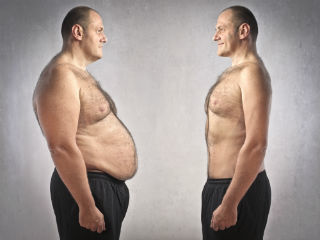 The entire premise of the Primal Blueprint is enabling you to be the architect of your health and happiness. If we can identify the environmental triggers and selective pressures under which the human genome developed, we’ll have a great roadmap for engineering our optimal lifestyle. And for the most part, it works. Not everyone will get the exact body they desire. You won’t all lose every extra pound. I can’t guarantee a six pack or a complete eradication of baby weight. But all in all, eating and living this way seems to produce good results. You can, it seems, affect your health, body composition, and fitness.
The entire premise of the Primal Blueprint is enabling you to be the architect of your health and happiness. If we can identify the environmental triggers and selective pressures under which the human genome developed, we’ll have a great roadmap for engineering our optimal lifestyle. And for the most part, it works. Not everyone will get the exact body they desire. You won’t all lose every extra pound. I can’t guarantee a six pack or a complete eradication of baby weight. But all in all, eating and living this way seems to produce good results. You can, it seems, affect your health, body composition, and fitness.
But genes still matter. And there’s a large trove of evidence showing that a person’s genetics are really good at predicting their risk of obesity.
A 1990 study took 12 pairs of adult male identical twins—with identical genes—determined their base metabolic rates and calorie needs, then overfed them by 1000 calories per day, six days a week for 12 weeks. Mean weight gain was 8.1 kg, ranging between 4.3 to 13.3 kg—all over the board, except for within the pairs of twins. When you compared one twin pair to another, weight gain was very different. When you compared twins within a pair, the weight gain was extremely similar. Not only that, but twins within a pair showed remarkable similarity in where fat was deposited (belly, hips, etc) and how much body fat was actually accrued. Overall, there was three times more variance in the various obesity measures between pairs than within them.
Genes explain how two people can have a vastly different responses to the same number of calories. They also explain how two twins can have the same response, and how two family members can have a similar response.
Subsequent papers have confirmed that obesity is highly heritable and that most of the heritability comes down to genetic factors.
How does it all work, exactly? What are these genetic variants doing that predispose us to obesity?
We don’t know most of them. Genome-wide association studies (GWAS), where vast reams of a population’s genetic data are analyzed to find patterns and associations between health conditions and genetic variants, can only point to genetic regions, not specific polymorphisms. Here are some specific ones, though:
Insulin resistance: The PTP-1B regulates insulin signaling, and polymorphisms to the gene have been shown to protect mice from otherwise obesogenic high-fat/high-sugar diets. Deletion of the gene protects mice against insulin resistance and diet-induced obesity, while mice with the full homozygous set easily gain weight. Another genetic variant increases insulin resistance by way of hypersensitivity to stress hormones. Folks with the variation tend to have more insulin resistance, higher body weights, larger waists, and a greater risk of type 2 diabetes.
Leptin signaling: Leptin affects bodyweight by regulating both satiety (increases it) and energy expenditure (increases it). If you have low leptin levels, or your leptin receptors aren’t responding to the hormone, you’ll likely eat more and burn less. Homozygous mutations to the leptin receptor gene which truncate its structure and inhibit its ability to interact with leptin increase the risk of obesity in humans. People with a genetic inability to produce leptin grow massively obese; supplementary leptin makes them lean.
Basal metabolic rate: BMR determines your baseline energy requirements—the number of calories you’ll burn just sitting around maintaining normal physiological function. Higher BMRs protect against obesity, while lower BMRs predispose you to it. That jerk who can sit around eating entire pizzas all day and stay lean? He’s probably got a high basal metabolic rate, which he got from his parents. Studies show that some portion of the obese population have a genetic variant that reduces their metabolic rate.
Hypothalamus signaling: The hypothalamus is the seat of obesity in the brain. It controls energy balance. It’s where the rewarding properties of food are determined. It’s where satiety and hunger originate. It’s riddled with leptin receptors that ultimately decide how much food we eat. And certain polymorphisms of the genes that regulate production of the compounds the hypothalamus uses to communicate and enact these decisions predispose us to obesity. Major polymorphisms to these genes are rare but almost always lead to severe obesity, while more minor variants may nudge us toward higher body weights.
Circadian rhythm: Polymorphisms in circadian rhythm genes can predict how a person’s energy expenditure will change in response to diets. If you’ve got the variant that causes a huge drop in energy expenditure when you diet, you’ll be less successful, more likely to eat extra food to compensate for the lost energy, and more susceptible to the negative side effects of calorie restriction (fatigue, malaise).
The tendency of most diets to fail also supports the primacy of genetics.
For most people, dieting just doesn’t work. They’ll lose weight, but gain it all back within a year. They’ll lose weight, and only keep it off if they subject themselves to ever-lower calorie counts that produce other unwanted health effects. They’ll keep it off as long as they have a team of clinicians hovering over them. In the real world, dieting to lose weight usually fails. If genes determine obesity, we’d expect this to happen.
Twin and adoption studies (where researchers see whether adopted children inherit their biological parents’ or adopted parents’ bodyweight) agree that obesity and being overweight are highly genetic. Overall, about 40-70% of obesity is hereditary. That sounds like a lot. That sounds like genes are your destiny.
But not everyone fails at their diets, do they?
We have hundreds of Success Stories right here on the blog that defy that claim. Many, maybe most of them are dealing with genetic propensities toward obesity, yet they figured out how to beat the odds.
Insulin resistant because of your genetics? Maybe a low-carb diet will work best for you. You can also lift heavy things, sprint sometimes, walk a ton, and do other things that improve insulin sensitivity.
Circadian rhythm gene polymorphism making you more sensitive to obesity-inducing effects of sleep deprivation? Get your sleep hygiene under control.
Basal metabolic rate lower than you’d like? It’ll be hard, but you’ll have to figure out a diet that inadvertently reduces caloric consumption.
These aren’t silver bullets. Swimming upstream against your own genetics is hard, and many, maybe most, people fail. But you don’t have to.
And another wrinkle in all this is that genes affect behavior. Got enough willpower to stick to your diet? It’s probably genetic. Open minded enough to consider that everything you’ve ever learned about health and nutrition is wrong and perhaps this Mark Sisson guy is onto something? You got it from your parents.
So yes: genes play a huge role in obesity.
Only genes can’t wholly explain the huge rise in obesity rates because genes don’t change that fast. People aren’t suffering from in vivo mutations to their “obesity genes” en masse.
The real problem is that almost everyone in the western world exists in a shared food environment which is obesogenic. If you live in America, you’re awash in drive-thrus, Big Gulps, and inexpensive, delicious processed food that’s been engineered to interact with the pleasure centers in your brain. Most modern countries are in similar boats, and obesity rates are climbing across other nations as they adopt our food-ways and work habits. The genes aren’t changing (at least, not quick enough to account for the stats).
The environment is changing. But because the environment has changed for everyone, and most people never really question its obesogenic nature—they eat the pizza, they buy the processed food, they sit for eight hours a day at work and watch TV for four, they slog away on the treadmill—researchers looking for the genetic origins of obesity miss or discount the effect of environment. Almost everyone whose genetic data they’re examining is exposed to the same obesogenic food environment, and its ubiquity masks its effects. The result is researchers pointing the biggest finger at genes. They’re not even “wrong.” The genes still play the major role.
Their mistake is assuming the environmental conditions cannot be changed. But they can.
Few researchers and genetic determinists consider the outliers, the ones who extricate themselves from the yoke of the yolkless omelets. The ones who read nutrition blogs and buy ancestral health books, and only use mayo made with avocado oil. They exist in the modern environment but resist its pull. They may have the genes for obesity but manage to remain—or get—lean. These are our people.
Genetic determinists might say that everything we’ll ever do is ordained by our genes. If we gain weight, it’s our genes. If we want to lose weight, our genes will determine how we choose to do it. If we choose to diet, our genes determine the best one, how our body responds, and how strict we are. If our body responds poorly, our genes determine whether we’ll give up or try something new. If we decide to start lifting weights, our genes determine whether it has any effect. And because we “can’t change the environment,” nor can we opt out of eating junk food or decide to drink water instead of soda if our genes won’t allow it, genes are all that matter.
That’s malarky.
You can view everything through the prism of genetics and heredity, but why?
I’m not even saying they’re wrong. Genes really do determine many things, including metabolism, behavior, and body weight. I just don’t see the point of thinking like that. Even if agency is an illusion, and I didn’t actually decide to pattern my eating and exercising habits around an evolutionary, ancestral blueprint but instead was ordained by my genes to do it, it’s a helpful one that I think we need to believe in.
Maybe belief in free will is genetically determined. I don’t know.
But I know that some people have figured out how to lose weight and keep it off in the modern obesogenic food environment. Have you?
Thanks for reading, everyone. Take care and be sure to leave your thoughts down below. I’m really curious to hear what you all have to say.
Like This Blog Post? Subscribe to the Mark's Daily Apple Newsletter and Get 10 eBooks and More Delivered to Your Inbox for FREE



August 29, 2016
Dear Mark: Tendon Edition
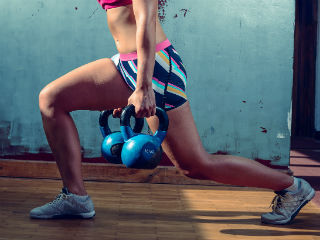 Last week, I told you how to strengthen your tendons and improve their resilience to strain and injury. You had a lot of questions in the comment section. For today’s edition of Dear Mark, I’m answering some of them. First, can Dan John’s “Easy Strength” program work for bodyweight training? Probably, and I give my suggestions on doing so. Next, what’s the deal with meniscus tears—mild ones? Can you heal them yourself? Are there any exercises that help the process? And finally, can the tendon exercises I discussed in the original post help folks with carpal tunnel syndrome?
Last week, I told you how to strengthen your tendons and improve their resilience to strain and injury. You had a lot of questions in the comment section. For today’s edition of Dear Mark, I’m answering some of them. First, can Dan John’s “Easy Strength” program work for bodyweight training? Probably, and I give my suggestions on doing so. Next, what’s the deal with meniscus tears—mild ones? Can you heal them yourself? Are there any exercises that help the process? And finally, can the tendon exercises I discussed in the original post help folks with carpal tunnel syndrome?
There were some other questions about nutrition for tendon health, which I’ll cover in a future post. Don’t think I’m ignoring them.
Let’s go:
How would you apply the principles of the Easy Strength program to body weight exercises? Just reduce the reps? This is coming from a sedentary 46 year old beginner who is thinking about getting started.
John
Yeah.
As I understand it, the Easy Strength program was meant for long time lifters who were sick of getting bogged down in the details, the type of people who’d jumped from program to program in search of the optimal way to train and in the process of stressing out over it actually stopped training. Easy Strength just boils things down and makes training a lot easier (both physically and mentally). It removes the guesswork.
For an untrained sedentary middle aged guy, bodyweight “Easy Strength” is great.
Pick five movements to do every day:
A knee flexion exercise (squat, lunge, single leg squat, etc).
A hip hinge (deadlift, kettlebell swing, etc; this generally requires a weight so bodyweight may not work exclusively).
A press (overhead, pushup, dip, handstand pushup).
A pull (pullup, row).
A loaded carry (again, you need an external weight for this, but it doesn’t have to be a dedicated piece of exercise equipment; a heavy bag of books or a sack of sand work).
For each movement, assess your max reps. Go to failure on each, note how many reps you managed, and cut them in half for your work sets. So if you can only do 30 pushups in a row max, do 4-5 sets of 15 each day. If this rep scheme is still too hard to do every day, reduce by a third (15 reps becomes 10). Remember, it should be “easy,” not difficult. Your reps should “pop.”
As you progress, you can add weight by wearing a weighted vest or using weighted implements around the house. Load up a backpack with heavy books. Carry your kid or spouse.
Can you advise about slight lateral tears in meniscus? I’m 62, just started weight lifting this year and seem to have injured my right knee – but not badly enough for surgery. Any suggestions for strengthening?
Thanks,
Peg
Movement, movement, movement. Wait, let me amend that: pain-free movement, pain-free movement, pain-free movement.
Just keep moving, exercising, and training. Do everything that doesn’t hurt.
Low-or-no-resistance cycling. It’s boring but it works. Motion is lotion. Get a good book or podcast going and hit the bike.
Knee circles (see this great post by my buddy Angelo Delacruz).
Dick Hartzell’s knee rehab exercises. You’ll need some bands.
Focus on strengthening the hamstrings, glute medius, and glute maximus.
Basically, the entire posterior chain tends to be weaker in people with knee issues.
Hamstrings: Romanian deadlifts are great for this, and much simpler than they look.
Glute medius: Lie on your side and lift your leg up to 45 degrees. Stay fully extended at the hip. Don’t go into flexion (don’t bend). Aim for 3 sets of 20 reps on each side.
Glute max: Try glute bridges. Both weighted and unweighted, single leg and double leg. Hip thrusts (eventually with a weight across your hips) are also great for the glute max.
Squatting with different stances. A fun drill is to scatter a handful of coins across the floor. Then, using the position of the coins as a guide (a la Twister), squat down in various stances (wide, narrow, stagger, lunge, etc) to pick them up. Again, avoid pain.
Standing up from a cross-legged sitting position without using hands (and going back down). See this link. Make sure you can do this without pain. It’s a great way to condition the connective tissues of the knee.
Walking on various parts of your feet. Sounds weird but it hits your tissues at different angles. Walk on the outside of your feet. Walk on the inside. Walk on your heels. Walk on the balls of your feet. Walk with your feet turned out and in. Do this on sand. Do it barefoot as much as possible.
If you hurt yourself lifting weights, consider finding a good trainer for a few sessions until you get the hang of it.
The good news is that tears on the outer edges of the meniscus do receive blood flow and can heal themselves. Check everything out with your doc/PT before trying them, but I think you can make very good progress. Good luck!
I wonder if/how some of these exercises could help prevent certain other repetitive use injuries, like carpel tunnel. If the surrounding tendons are stronger/more supportive, maybe it’d have some protective benefit. Just thinking out loud
Ashley
The carpal tunnel is a big causeway in the wrist for the median nerve and tendons to pass through on their way to the fingers. In healthy wrists, there’s a lot of movement through the tunnel. Every time you flex a finger or bend your wrist, that nerve and those tendons slide through. They should slide through smoothly. In carpal tunnel syndrome, they don’t. The median nerve doesn’t glide in carpal tunnel; it gets stuck and stretches. This is painful and can even restrict the function of your hand.
The physical therapy treatment for carpal tunnel with the most evidence behind it are probably nerve glides.
Here’s a good basic description and video of them. Or try the following a few times a day:
Sweep your arm out to the side until it is slightly behind you, palm facing forward, elbow gently straight
Pull your wrist back until you feel a gently tension somewhere in the arm
Relax the wrist forward until tension is relieved
Repeat 10 times
Ease the tension on the wrist to about half
Holding this position, gently raise your arm until you feel tension (stay below shoulder height)
Lower the arm until tension is relieved
Repeat 10 times
Ease the tension on the arm to about half
Tilt your head (bring opposite ear towards opposite shoulder) until you feel tension
Straighten the neck until tension is relieved
Repeat 10 times
As a major cause of carpal tunnel syndrome is repetitive motion, or keeping your wrist stuck in that “poised over keyboard” position, wrist mobility training can really help. Try Mobility WOD or wrist yoga.
Play around with some self hand-massage, too. Really dig into any tender spots to break up adhesions that could be inhibiting proper nerve movement.
That’s about it, folks. Thanks for reading, thanks for asking questions, and thanks for assisting with your own input down below in the comment section.
Take care!
Like This Blog Post? Subscribe to the Mark's Daily Apple Newsletter and Get 10 eBooks and More Delivered to Your Inbox for FREE



August 28, 2016
Weekend Link Love – Edition 415
 Check out my interview with Kathy Smith. I so enjoyed watching Kathy’s daughter Kate run in the Olympic 800 meter finals in Rio this weekend!
Check out my interview with Kathy Smith. I so enjoyed watching Kathy’s daughter Kate run in the Olympic 800 meter finals in Rio this weekend!
Tag someone you think would be an excellent Primal Kitchen Restaurants owner and you’ll be entered to win a 3-pack of PRIMAL KITCHEN™ Chipotle Lime Mayo and a 3-pack of Extra Virgin Avocado Oil.
Are you a health coach? Learn how to land that first client.
Research of the Week
Two years of using a standing desk at school lowers BMI in kids (and no, they weren’t six year-old bodybuilders losing lean muscle mass!).
Feared food additive carrageenan actually harmless, new study says.
Latinos age more slowly than other ethnic groups.
Both “greater fruit and vegetable intake” and higher “fat, meat, egg, and tofu intake” were associated with better-smelling sweat.
New research reveals the true human cell to bacterial cell count in the body: 1:1.
PETA would have really hated Otzi.
New Primal Blueprint Podcasts

Episode 132: Dr. Lauren Noel: Host Elle Russ hangs out with Dr. Lauren Noel, a licensed naturopathic doctor who specializes in thyroid health, digestive disorders, and autoimmune conditions. You heard right: Dr. Noel is an expert on the three most confusing conditions that conventional medicine has almost no clue about.
Each week, select Mark’s Daily Apple blog posts are prepared as Primal Blueprint Podcasts. Need to catch up on reading, but don’t have the time? Prefer to listen to articles while on the go? Check out the new blog post podcasts below, and subscribe to the Primal Blueprint Podcast here so you never miss an episode.
Should You Wear a Fitness Tracker?
Why Grok Didn’t Have Work-Life Balance and Neither Will You
Interesting Blog Posts
What does Primal Health Coach Dr. Al Danenberg eat each week?
How to make meetings more tolerable (and effective).
Simple, effective tips for beating type 2 diabetes.
To be resilient, you must recover—not endure.
Doctors: your patients could use a health coach.
Assuming the associations are even causal, doing way more exercise than currently recommended barely offers any extra protection against diabetes and colon cancer.
Media, Schmedia
What was it like being a Roman gladiator?
Forbes enters the A2 vs A1 casein fray.
The connection between latitude, birth month, and celiac disease.
Everything Else
A new mushroom-based supplement prevents you from tasting bitter flavors. Nope, no unintended consequences detected.
Ketogenic diets may help fight cancer, and you can help researchers prove it.
If parenting is overrated, so too is schooling.
I can see this being partially true.
Anxious? Just embrace it.
I think you’re doing it wrong.
Recipe Corner
Try these peach, hatch chile, and shrimp ceviche tostadas.
It’s got corn, but so what: chilled summer soup.
Time Capsule
One year ago (Aug 28 – Sep 3)
13 Ways to Move More Throughout the Day (Even While at Work) – You need it. Here’s how to make it happen.
10 Food Pairings That Make Surprising Nutritional Sense – Foods that taste good together often confer synergistic nutritional benefits.
Comment of the Week
If it’s not on Strava it didn’t happen.
So say all my athlete friends!
– I think I know your friends, Jane.




Mark Sisson's Blog
- Mark Sisson's profile
- 199 followers



